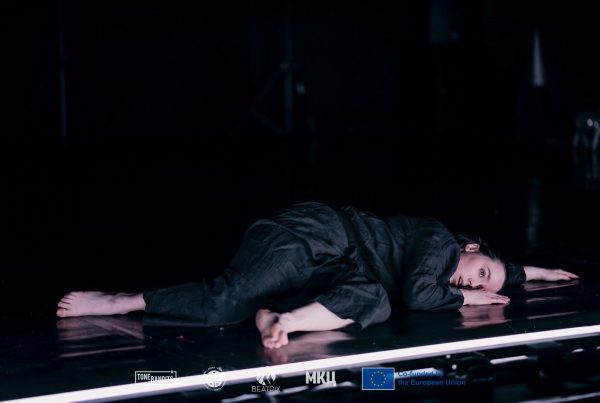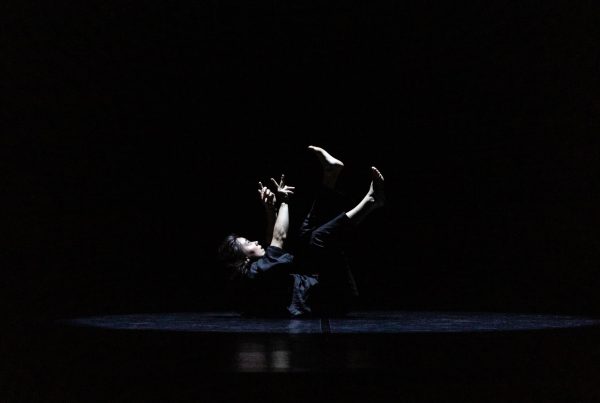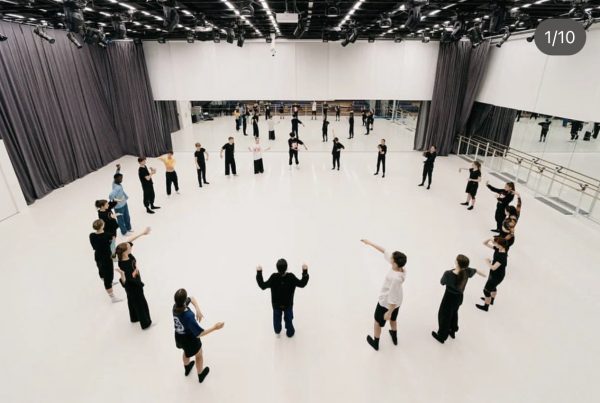Ivana Balabanova is the co-owner and artistic director of “Bitrix Cultural Centar”, where in the past fifteen years she has realized most of her work and created a large number of platforms for the eduction and affirmation of urban and contemporary dance. That is why in 2019 she was elected European Ambassador in the Council of Europe, and in 2021 she won the Youth Civic Engagement Award from USAID.
With “Beatrix” you are starting a project called “Tanz.Transformato – Reimagining our dance community”. What is the project working on and what is it about? In how many cycles will it be developed?
With “Beatrix”, over the years we have been actively working in the interest of the development of the local dance scene, sometimes with our own capacities and capabilities, as well as with the support of several local contributors. Recognizing the need to exchange practices with the world and the necessity of complementary eduction and exchange of knowledge between the national and international scene, we have so far developed the platforms that have been in use for more years, such as: the platform for dance workshops “Bitrix Specials”, the international dance camp and festival “Bitrix Dance League”, the festival “Contemporary urban choreographic miniatures” the dance caravan “Positive Parenthood” in cooperation with UNICEF and countless smaller projects. As a consequence of the long-lasting activism, our ideas were also recognised by the USA Embassy in the country, and we also implemented the year-long project VADA – Virtual American Dance Academy, which was an incredible success and involved young people working in the field of urban dance. However, if the main activity of “Beatrix” is the amateur and semi-professional scene, it was inevitable that we should redirect our focus to the professional scene. The need for this has arisen as a consequence of the impossible conditions for work and earnings of professional dancers and choreographers in the field of contemporary dance, which, again, it humiliates the spirit of the whole dance scene, thereby the young, aware of their shortcomings in the professional context, lose interest in pursuing this career. Namely, there are no job opportunities, and the opportunity in the non-suspended professional community is scarce. This is how the idea of “Tanz.Transformator” was conceived, the aim of which is to create a context for working and collaborating with local and international dancers and choreographers, and with the idea of those small dancers in the country to provide them with continuity in working through teaching in three dance productions. The project was supported bt the Embassy of Switzerland and SDC (Swiss Agency for Development and Cooperation), and envisages three cycles that include: open dance workshops for the wider dance community, a dance residency with two international and one local choreographer, and national tours in several cities in Macedonia. In this case, the dancers get the chance to participate in a workshop, and at the end, the choreographer proposes its team which is to be included in the residencies and tours.
What are the conditions for the freelance dancers in Macedonia? How much and how well can they work given the limited possibilities?
While the world offers frequent open calls for dancers and choreographers, as well as the European countries offer continious support for the artists, unfortunately, the support of dance in Macedonia is scarce. One of the reasons for this is the lack of structure and recognition for dance, that eventually results with our country not having a functional dance company that has the resources to recruit dancers and choreographers and to continuously support the dance community. Additionally, national institutions do not significantly support dance and the support is much lower than for other art forms. There is no cooperation between the art sectors and lack of advocacy. However, I would say that there is a group of young people, some of whom try to keep the spirit alive. I believe that, in the long run, these young generations will bring changes.
From your personal experience, how important do you think it is to invest in the dance community and advocate for change, as well as proactively build platforms and opportunities for dancers where they could earn and/or broaden their knowledge?
Instead of “how important” I would say that it is neccessary. Dance feeds on contact, exchange and cooperation. Things in the world are changing and are being transformed quickly, so even for those who have resources, it is difficult to keep track of what is happening. But, this is not just about technical support for the dancers. As in our country, what is significantly lacking is a sound pedagogical approach, a mentoring approach and a strong/brave unencumbered vision of leaders without hypertrophied egos. With the idea of transcending the inadequacies of the entrenched traditional attachments, we need to open up to the world and transform our existing ideas. I believe that when a firm ground would be laid, the youth would get the chance instead of operating from a position of frustration and fighting with the obstacles, to proactively work on their development. Ours, my generation, has inherited a great deal of responsibility on the basis of this work, but I have no doubt that some of us will succeed in this. Especially now, living in Zurich, I can feel the lack in communication, the respect and support towards artists.
You have mentioned international choreographers that will take part in the project. Can you tell us more about us? Who are they and what art do they have behind them?
The dance residencies of “Tanz.Transformator” are published through open call. With it, we offer a possibility to the international networks of choreographers. Within the first cycle, which started in January, we obtained 93 applications from international choreographers. The selection process was a real challenge, especially since most of the entries were by skilled and qualified artists, with a large portfolio behind them. The selection was made by the Tanz.Transformator team, as well as some of my colleagues from the ZhDK Arts Academy in Zurich, but also some of the local colleagues. For the first time in the magazine “Portrait”, we share the first choreographer – Tobias Draeger from Hamburg, Germany, who is incredible in his expression and aesthetics. His work will begin on the ninth of January and the first tour is scheduled for February. In the first phase, thirty dancers were selected for the stage, and only seven of them will work on the dance production.
What is the state of contemporary dance on the world stage? What are the developing activities? How are dancers motivated to improve their dancing abilities?
However devastating, I am grateful that the coronavirus pandemic has significantly increased the demand for support for artists and it seems to me that new opportunities abound in the world to fund dance productions and artist residencies for established and emerging artists. This, again, is of particular importance for the support of small collectives and dance companies, which it seems to me are slowly but surely transforming the system of dance that in the past was faced with the bureaucracy of large dance theatres and companies with a strong hierarchy and a strict traditional structure. Today, the small collective is an example of vitality and freshness and in the world there are new brave creators who are creating diversified qualified dance production that bounces off the previously set old standards. This gives me hope that the voice of the new generations will be heard, and until the problem of overwork and high competition may be addressed, I am sure that the skilled creators and dancers will be rejuvenated thanks to a reinvigorated and dedicated audience that does not support the relapse.



